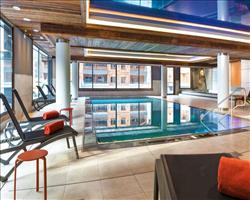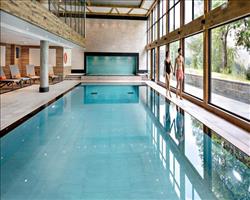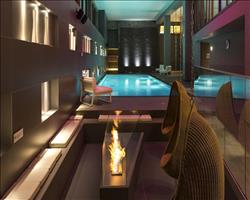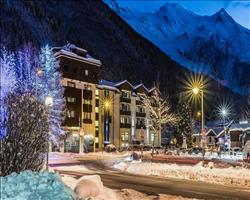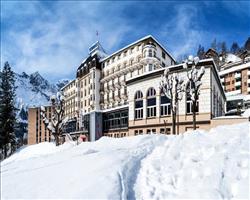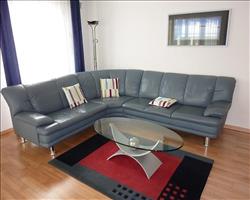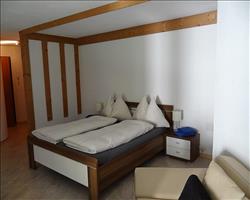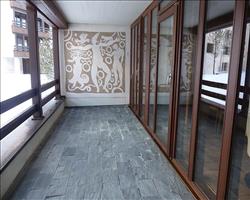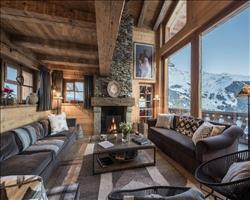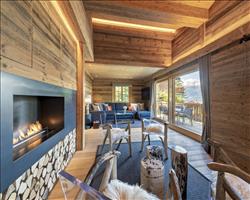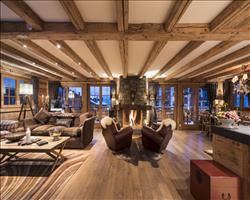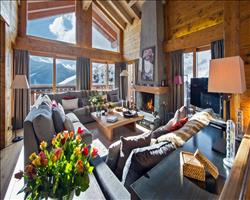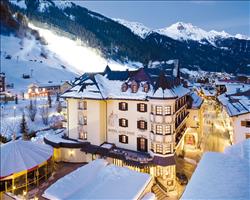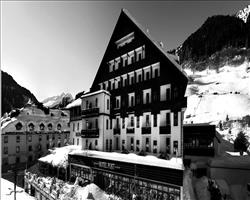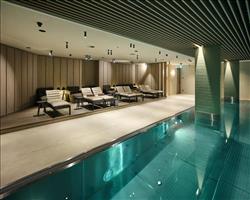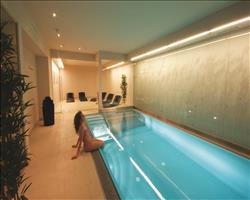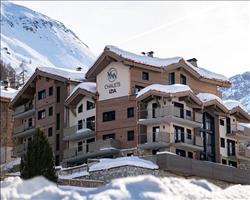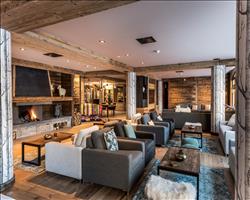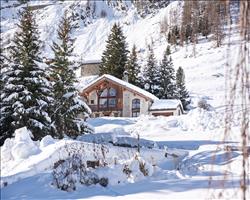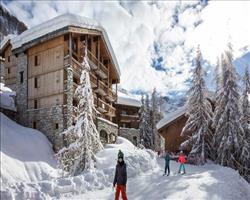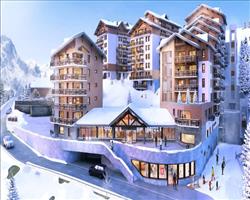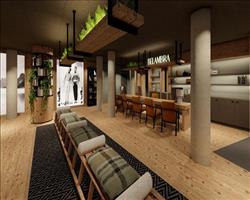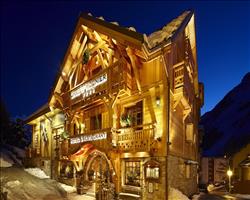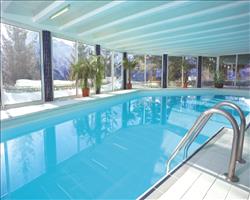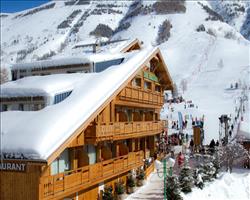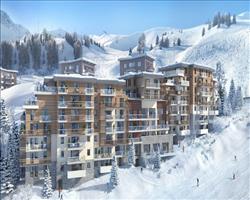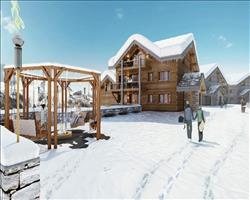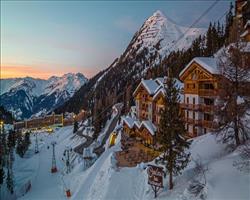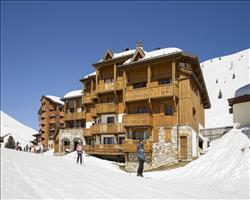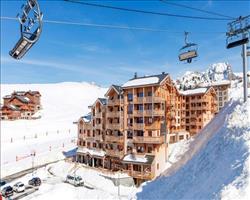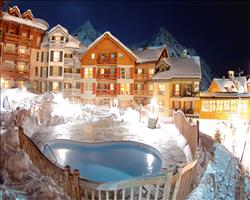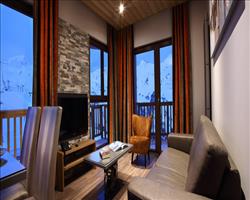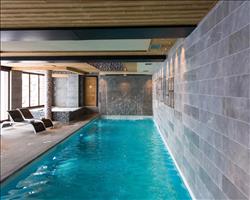Top 10 Ski Resorts for Ski Powder
Chamonix in France is The Big-Mountain Powder Capital of the Alps. Chamonix offers some of the steepest, deepest, and most challenging terrain in the world. The Vallée Blanche is an iconic 22km glacier descent, accessed by the vertiginous Aiguille du Midi cable car, which disgorges thrill seekers at an ear-popping 3,842m (with a local guide to avoid crevasse risks). For me the real treasures are to be found up the Grand Montets from Argentiere further up the valley, which has arguably the best lift-served off-piste skiing in the world. The less adventurous will love the post-dump magic to be found in the Brévent and Flégère, which are accessed by lifts right in town. Fly into Geneva, Chamonix powder skiing is 1 hour by shuttle.
“Dropping into Pas de Chèvre after a storm was the most intense run of my life. The steep, narrow entry led into bottomless powder, with the added adrenaline rush of navigating around icefalls,” Sarah M, London.
Engelberg is Switzerland’s Powder Capital. Engelberg gets some of the deepest snow in the Alps, thanks to its north facing glacier and unique microclimate. Storms roll in from the north, dumping massive amounts of snow onto the Steinberg Glacier and Laub face. The resort has an incredible amount of lift-accessed off-piste terrain, meaning you don’t need to hike to find fresh lines. The north-facing slopes help preserve the powder for days after a storm. The Laub is Engelberg’s signature freeride run - a 1,200m vertical descent down an open powder face. For more adventurous skiers, the Steinberg Glacier offers untracked powder fields, but with the added frisson of skiing over crevasses, so book a local mountain guide. Flying into Zurich, Engelberg is 1 hour by train or from Lucerne is 40 minutes by train. NB: Engelberg is easily accessible via Switzerland’s efficient rail network.
“I woke up to 60cm of fresh snow and made a beeline for the Laub. The feeling of weightlessness, of effortless turns in bottomless powder, was almost dreamlike. Later, we explored the Steinberg Glacier, where fresh lines lasted all day,” Peter G, Manchester.
Verbier in Switzerland is Steep, Deep and Legendary. Verbier is a freerider’s paradise. It’s home to the Freeride World Tour Finals on the Bec des Rosses, and for good reason - the terrain is steep, technical, and full of deep powder stashes. The resort receives consistent snowfall, and its huge ski area means there are almost always fresh tracks to be found if you know where to look. The Col de Mines and Mont Gele offer some of the best off-piste powder skiing in the Alps, with long, open faces and countless lines. The lift system makes it easy to access incredible terrain without long hikes. We would recommend booking some time with one of the pros from our friend Warren Smith’s ski school, who will show you the best secret spots while keeping you safe. Flying into Geneva, Verbier’s 4 Valleys ski area is 2 hours by car or train.
“After a 50cm dump, I skied the Col de Mines with a local guide. Every turn was a cloud of powder, and by the time we reached the bottom, my legs were burning, but I couldn’t stop smiling. Verbier is now my favourite place to ski powder in the world!” Sion F, Bristol.
St. Anton is Austria’s Most Popular Powder Paradise. St. Anton is famous for huge snowfalls which create world-class tree skiing on the groomers, and absolutely epic powder skiing on the incredibly varied off-piste terrain. The Valluga North Face is one of the best freeride descents in Europe, while the Rendl backcountry zone is a hidden gem for deep snow and fewer crowds. For best value, we recommend joining an ‘open group’ with local guides Piste-to-Powder from as little as £150 for a full day. Flying into Innsbruck it’s barely an hour by train or from Zurich around 2.5 hours.
“I had one of my best powder days lapping Rendl. The trees kept the powder largely light and untouched, and even by the afternoon, we were still finding fresh lines,” T Pickard, Cardiff.
Val d’Isère in France has Powder with Easy Access and Après Just as Big. Val d’Isère is a freeride powerhouse with huge snowfall, high-altitude powder fields, and easy access to big-mountain terrain. To best enjoy the Col Pers and Grand Vallon’s steep untracked descents, and the tree skiing haven of Forêt du Rogoney, you need to get up and out early. This resort is no ‘well kept secret’ but rather the most famous and popular ski resort in the world, so finding a secret stash requires an alarm clock and ideally a local like our pal Henry (of HenrysAvalancheTalk.com) who lives down in La Daille and has spent decades helping to keep Val’s most ardent powder hunters satisfied yet safe.
“We skied Grand Vallon in waist-deep powder, then hit Col Pers, with powder flying over our heads, before making our way across to our grande finale at La Folie Douce. The final wobble down La Face de Bellevarde reminded us we are mere mortals after all - a textbook perfect powder day,” TJ.
La Grave in France is The Ultimate Powder Skiing Playground. La Grave is unlike any other ski destination in the world. There are no marked pistes and no groomed slopes, just raw, unpatrolled big-mountain terrain. A single cable car whisks you up to 3,200m, where you have over 2,000m of vertical descent through glacial terrain (it’s actually the back side of Les 2 Alpes), deep couloirs, and open rolling powder fields. The resort’s north-facing slopes hold snow for weeks after a storm and, with minimal infrastructure, there are no crowds to track out the best lines. If you're serious about freeride skiing and have the chops and the cojones, La Grave is a bucket-list destination. The Vallons de la Meije is one of the most famous descents in the Alps, offering wide and wonderful skiing at the top, then dropping into narrow chutes below the glacial terrain. Hiring a local guide is essential to navigate the glaciers and crevasses safely (this is a must, not a recommendation). Flying into Grenoble it’s 1.5 hours by car or via Lyon is 2 hours drive. There are no direct ski buses, so hiring a car is the best option.
“Floating down the Banane Couloir after a 40cm overnight dump was an experience I’ll never forget. The snow was waist-deep, light, and bottomless, and every turn sent plumes of powder flying. At the bottom, we skied through a silent, snow-covered forest, with our tracks the only sign of life,” PJ, Inverness.
Andermatt in Switzerland is The Proverbial Hidden Gem. Andermatt is one of the snowiest places in the Alps. If you’re looking for steep, technical freeride lines, head to the Giraffe or Felsental. For long, rolling powder fields, ski Guspis. And if it’s a storm day, Nätschen’s trees will deliver some of the best turns of your life and some welcome cover from the weather. The Gemsstock area offers incredible freeride terrain, with long, sustained powder fields.
“Skiing the Giraffe Couloir after a meter of snowfall was unreal. The snow was so deep that every turn sent powder flying into my face - real snorkel skiing,” R Zimmerman, London.
La Plagne, France - Underrated Powder Haven. La Plagne may be known as a family-friendly ski resort, but beneath the surface, it hides some of the best off-piste powder skiing in France. As part of the Paradiski domain, it receives consistent snowfall, and its varied terrain - glaciers, tree runs, and open bowls - offers endless freeride opportunities. The Bellecôte North Face is the crown jewel of La Plagne’s off-piste scene. This 2,000m descent is a true backcountry experience, featuring steep chutes, rolling powder fields, and tree-lined exits into hidden valleys. The Forêt de Montchavin is another highlight - a vast forested zone with deep snow pockets that stays untracked long after a storm. La Plagne also benefits from relatively fewer freeriders compared to resorts like Chamonix or Verbier. This means that even days after a snowfall, you can still find untouched powder stashes in the trees and on lesser-known routes. Flying into Chambéry a transfer is 1.5 hours by car or from Geneva is 2.5 hours. The closest train station is Aime-La Plagne, with shuttle buses to the resort.
“One of the most memorable powder days was in the Forêt de Montchavin came after an unexpected overnight dump. The trees are perfectly spaced, the snow was light and dry, and we skied fresh tracks for hours without seeing another soul. Later, we took on the Bellecôte North Face, entering via the Petit Face Nord, where we found knee-deep powder in open, rolling terrain that felt like a playground. By the time we reached the bottom in Peisey-Nancroix - unforgettable,” Chris P, NYC.
Alagna and Monterosa in Italy is a The Hidden Freeride Gem. If you're looking for huge, big-mountain freeride terrain but without the crowds, we’d say Alagna is your dream come true. Part of the Monte Rosa ski area, Alagna is Italy’s answer to La Grave - a place where serious skiers come for long, untracked descents rather than modern resort infrastructure. The terrain here is steep, wild, and seemingly endless, with vertical descents of over 2,000m. The Malfa Glacier (erroneously labelled the ‘mafia glacier by a British skier I met there) contains stunning wide-open powder bowls, while the Couloir dell’ Aquila provides a heart-pounding descent through narrow, technical chutes. Unlike the busier resorts of the French and Swiss Alps, Alagna remains uncrowded, even after major storms. We recommend skiing all the way down into tiny, centuries-old villages, where a bowl of steaming Italian pasta and a glass of Barolo wine awaits. It’s a completely different freeride experience and one that blends raw mountain adventure with Italian hospitality. Flying into Milan Malpensa, it’s 2 hours by car. There are no direct trains, so a rental car is the best option.
“Skiing the Malfa Glacier after a ton of fresh snow, the entry was steep and intimidating, but once we dropped in, it was turn after turn through bottomless pow. At the end of the descent, we skied straight into Alagna’s historic village, where we warmed up with a shot of espresso. It was a perfect day of fresh snow freeriding mixed with authentic Italian charm,” J Mackey, UK.
Les Arcs, France - Tree Skiing & Powder Bowls. Les Arcs is one of the most underrated powder skiing destinations in the Alps. Part of the Paradiski area, it has a huge variety of off-piste terrain, including glaciers, open bowls, steep chutes, and some of the best tree skiing in France. The Grand Col and Aiguille Rouge sectors have freeride terrain, with long, exciting descents and stunning views over the Tarentaise Valley. We recommend you seek out where the real magic happens in the Malgovert Forest, a vast tree skiing zone that stays untracked longest after a storm. The Forêt de Villaroger is another hidden gem, with deep snow, perfectly spaced trees, and an incredibly scenic backdrop. Thanks to its relatively high altitude (up to 3,226m), Les Arcs holds powder well and, with fewer hardcore freeriders than Chamonix or Verbier, it’s easier to find fresh lines even days after a deep snowfall. Flying into Chambéry it’s 1.5 hours by car or via Geneva 2.5 hours. The closest train station is Bourg-Saint-Maurice, with a funicular taking you up to the resort.
“We spent an entire morning skiing repeatedly through Malgovert, with dry snow flying into our faces. Later, we hiked up to the Grand Col, where we skied one of the best high-alpine powder runs I’ve ever done, with soft, dry snow all the way down to the valley floor,” Chris, Oxford.
Ski Holidays in the Best Resorts for Skiing Powder
| Property | Resort | Price (per person) |
|---|---|---|
| Hotel Alte Post | St Anton | £ 2159 |
| Ullrhaus | St Anton | £ 1880 |
| Hotel Grischuna | St Anton | £ 1879 |
| Club Med Val d'Isère | Val d'Isere | £ 1876 |
| Hotel Taj-I Mah (Arc 2000) | Les Arcs | £ 1829 |
| Hotel Post | St Anton | £ 1509 |
| Hotel Heliopic | Chamonix | £ 1459 |
| Araucaria Hotel & Spa (Plagne Centre) | La Plagne | £ 1459 |
| Hotel Carlina (Belle Plagne) | La Plagne | £ 1456 |
| Hotel Avenue Lodge | Val d'Isere | £ 1429 |







